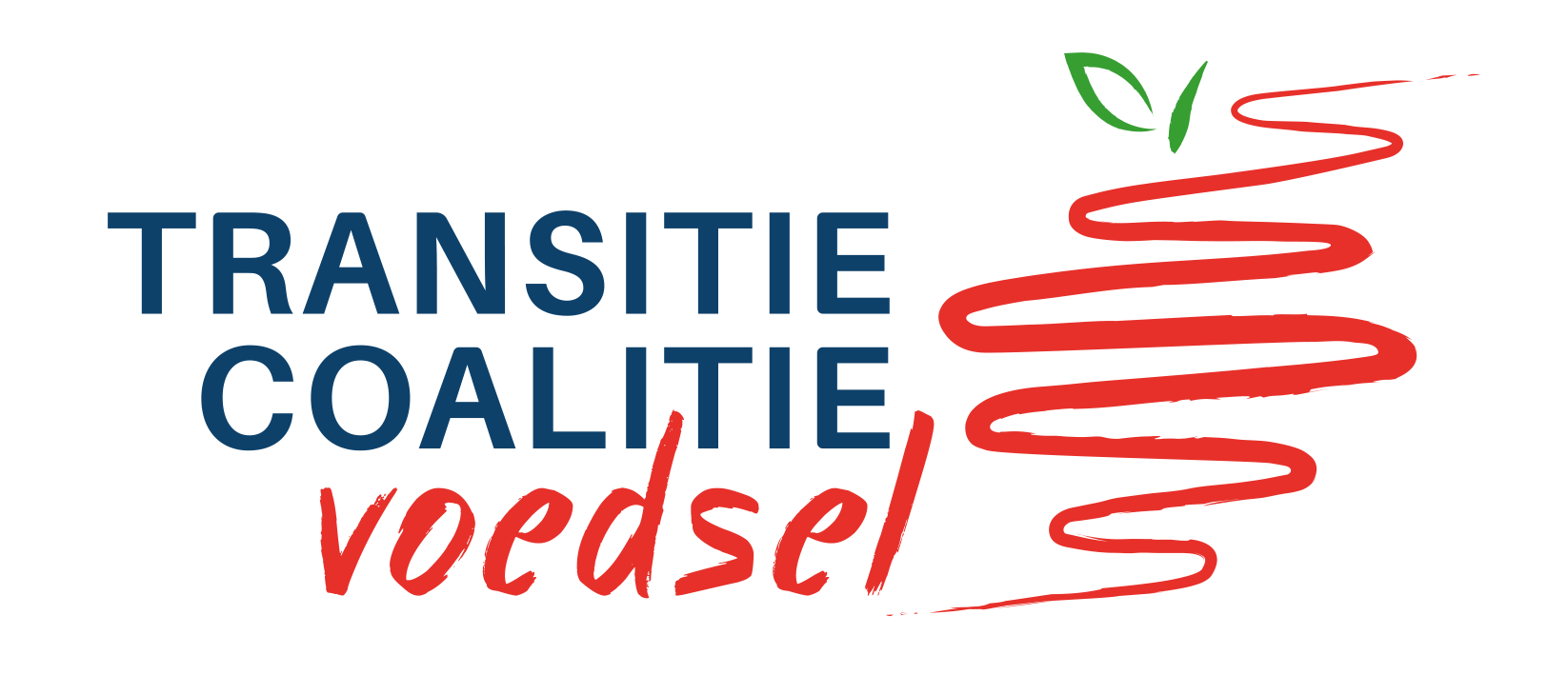

Willem Lageweg werd geinterviewd voor het magazine Circular Food Systems. Hij deelt in dit Engelstalige magazine zijn visie op kringlooplandbouw en de kansen die deze manier van productie biedt voor voedselveiligheid. Het artikel is ook hier te lezen in magazine stijl.
‘The way in which we produce our food is shifting ever more out of balance. We are taking more than the planet can give, and this is not sustainable.’ With these words, Carola Schouten, the Dutch Minister of Agriculture, Nature and Food Quality, calls for a transition to circular agriculture. This article highlights the objectives and principles of this concept and explores how circular business models could contribute to achieving global food security.
The problems of our current food system
Globally, the number of people suffering from chronic hunger and malnutrition is on the rise again after a few years of decline. At the same time, 25 to 30% of the food produced globally is lost or wasted. According to the Food and Agriculture Organisation (FAO), food production has to increase by 50% to feed the growing population. Within the current production system this
can only be achieved by exploiting significantly more land and other natural resources. The global food system has an enormous environmental impact. A recent report by the Intergovernmental Panel on Climate Change (IPCC) has calculated the impact of agriculture, livestock and other forms of land use on climate change. The report concludes that current production systems pose a
serious threat to food security. Agriculture is responsible for about a quarter of all greenhouse gases released by human activity. It is the dominant cause of deforestation and loss of biodiversity, uses about 70% of freshwater resources and takes up 40% of the world’s ice and desert-free land. Farmers in Low and Middle Income Countries (LMICs) experience the impact of climate change and resource scarcity every day, exploring how to adapt their businesses to the changing circumstances.
Scientists, policy makers, businesses, civil society organizations and consumers have come to realise that the time to
reconsider the current economic model is now. It is time to start exploring ways to build a production system where the
social and ecological costs of production are fully integrated.
The objectives and principles of circular food systems
The growing popularity of the circular agriculture concept has led to the emergence of many different definitions and frameworks of principles. These definitions vary widely, depending on the problems being addressed, the audience, or the lens through which
the author views the world. Food & Business Knowledge Platform has made an inventory of the ideas and concepts on circular agriculture worldwide, and found the following key elements: In general the concept of circularity stands in contrast to the linear economic model of ‘take-produce-consume-discard’ and instead works towards closing the loops in the food system, linking
production, consumption and residue streams in order to prevent the loss of natural resources as much as possible.
Loops of nutrients and food should be closed at the lowest possible level, and the use of fossil fuels, finite natural resources and artificial fertilizers should be minimized. The main elements of the system are summarized in the infographic. It is believed that the principles of circular agriculture could help to increase resource and business efficiency, improve ecosystem resilience,
preserve biodiversity and reduce emissions of greenhouse gasses. Furthermore, it could contribute to SDG 2 of the United Nation’s Sustainable Development Goals, by offering new and better solutions to achieve sustainable agriculture and food security.
The social, economic and environmental aspects of a circular food system
To make a successful transition towards circular agriculture, the social, economic and environmental aspects of the food
system should all be considered. Achieving the SDGs calls for a systemwide approach, concludes Wageningen researcher Siemen van Berkum in his report ‘Transition to sustainable food systems: the Dutch circular approach providing solutions to global challenges.’ ‘The food system approach comprises all the processes related to food production, usage and consumption; from growing and harvesting to transportation and waste disposal,’ he explains. ‘It highlights the importance of the socio-economic
context, and helps to clarify the tradeoffs between intervention strategies and system outcomes in all three sustainability
dimensions.’
The vision of the Ministry of Agriculture on circular agriculture is laid out in the document entitled ‘Valuable and connected’ (a summary can be found on page 8 of this magazine). In it, the Ministry acknowledges the presence of opportunities for business to earn a good income as one of the key requirements to successfully apply circular agriculture. Entrepreneurs currently taking on circular business practices are often unable to even cover the cost of their efforts. The agricultural cooperative Agrifirm is
investing in developing business models for circular agriculture, focusing on healthy soils, the use of circular fertilizers
and the valorisation of foodstuffs. ‘Using circular materials is currently more expensive than producing according to conventional methods,’ says Ruud Tijssens, Director Public and Cooperative affairs. ‘Although new concepts are under development, the general business case for circular agriculture is still weak.’ Willem Lageweg, founder of the Transitiecoalitie Voedsel, adds
that existing circular business models are mainly successful in high end niche markets. He mentions the vegetarian meat substitutes producer De Vegetarische Slager and the quality seedlings breeder Koppert Cress as examples of companies that are on the right track to developing circular business models. ‘However, we should start to define the success of circular business models more broadly, as current production methods will lead to loss of productivity and higher costs in the long term.’
Circular solutions for food security
The vision of the Ministry of Agriculture and most of the research into the opportunities for circular production and business models strongly focus on the Western European context, whereas the challenges in LMICs are often very different. According to professor Martin van Ittersum, co-author of the vision paper ‘Circularity in agricultural production’, the concept of circular agriculture primarily deals with problems related to a system based on highly intensive and efficient production and large concentrations of residue streams such as manure or beet leaves, typical of Western Europe. In some ways, food systems in LMICs are more circular, with smallholders often applying mixed farming systems and using resources efficiently. Yet these
systems are often low in productivity and soils are degrading due to unsustainable farming practices. Together, these factors
have a negative impact on food security ‘We should first focus on sustainably intensifying production on the current agricultural area,’ Van Ittersum points out. ‘But in the required intensification of African agriculture, principles of circularity should not be forgotten. They can help to minimize environmental impacts of extra food.’ Lageweg adds: ‘The principles of circular agriculture could help to preserve ecosystem resilience and reduce the potential impact of natural disasters and climate change, contributing to food security in the long term.’
Apart from increasing agricultural production, there is a world to win inreducing food losses across the value chain due to technological problems, such as poor harvesting procedures, sub-standard storing conditions and inefficient transportation. ‘40% of the food produced in Sub-Saharan Africa is lost in the value chain, that’s more than all humanitarian food aid put together’,
says former World Food Program director Ertharin Cousin. ‘By developing new techniques to reduce post-harvest losses we could almost double the amount of food available for the African continent.’
Van Berkum believes that the circular food systems approach could also offer solutions for LMICs. ‘The local manifestations of global challenges might be different, but the model works the same’, he explains. ‘As long as an intervention takes into account the environmental, economic and social aspects, it
could offer a sustainable solution.’ He mentions the example of a compost plant in Ghana, which was successfully developed and brought multiple benefits, including new jobs, a cleaner environment, less dependence on imported food and chemical fertilisers – and better human health thanks in part to more nutritious diets. More information about circular solutions contributing
to food security can be found in the case studies described in this magazine.
The role of the Netherlands
The Netherlands has taken a first step in developing a new vision on circular food systems, but a lot of work remains
to be done in order to translate vision into concrete policies. There is as yet no clear strategy towards applying circular
agriculture with international partners. The Ministry of Agriculture maintains its ambition to ‘keep our prominent place
in the innovation of production methods and be an example to other countries.’ The experts interviewed agree that
Dutch technology and knowledge could be of use for LMICs when they develop more sustainable agricultural sectors in
line with SDG 2. They also mention specific solutions, such as the application of cold chain technology to reduce food losses, sharing knowledge on integrated soil management and processing human food residues into animal feed, solutions for water scarcity, salination and manure surplus. But this is not just one-way traffic. ‘Producers in the Netherlands could learn from cattle
feeding practices in many LMICs’, Van Ittersum points out. ‘Chicken and pigs eat food residues from households and ruminants graze on the roadside.’
The experts suggest several policy steps to facilitate the transition towards more circular food systems worldwide. To remove important barriers, EU regulations on food waste and fertilizer use and the Common Agricultural Policy should be reconsidered. In the broader international context, The Netherlands should discuss the implications of a transition to circular food systems for
international trade and develop a joint vision on the opportunities such a transition will bring, using international platforms
like the World Trade Organization. Furthermore, the government should facilitate a national dialogue about true cost accounting and start to include the ‘hidden’ costs in taxes. The ministry should also modernise institutions and practices like the Topsectoren (key business sectors that have the Ministry’s special attention) and trade missions, by including innovative SMEs and facilitating
dialogue with frontrunners from LMICs. Finally, several experts have suggested that the government should develop policies to increase consumer demand for sustainable and nutritious food, by addressing the retail and food service industry and insisting on sustainable procurement policies.
